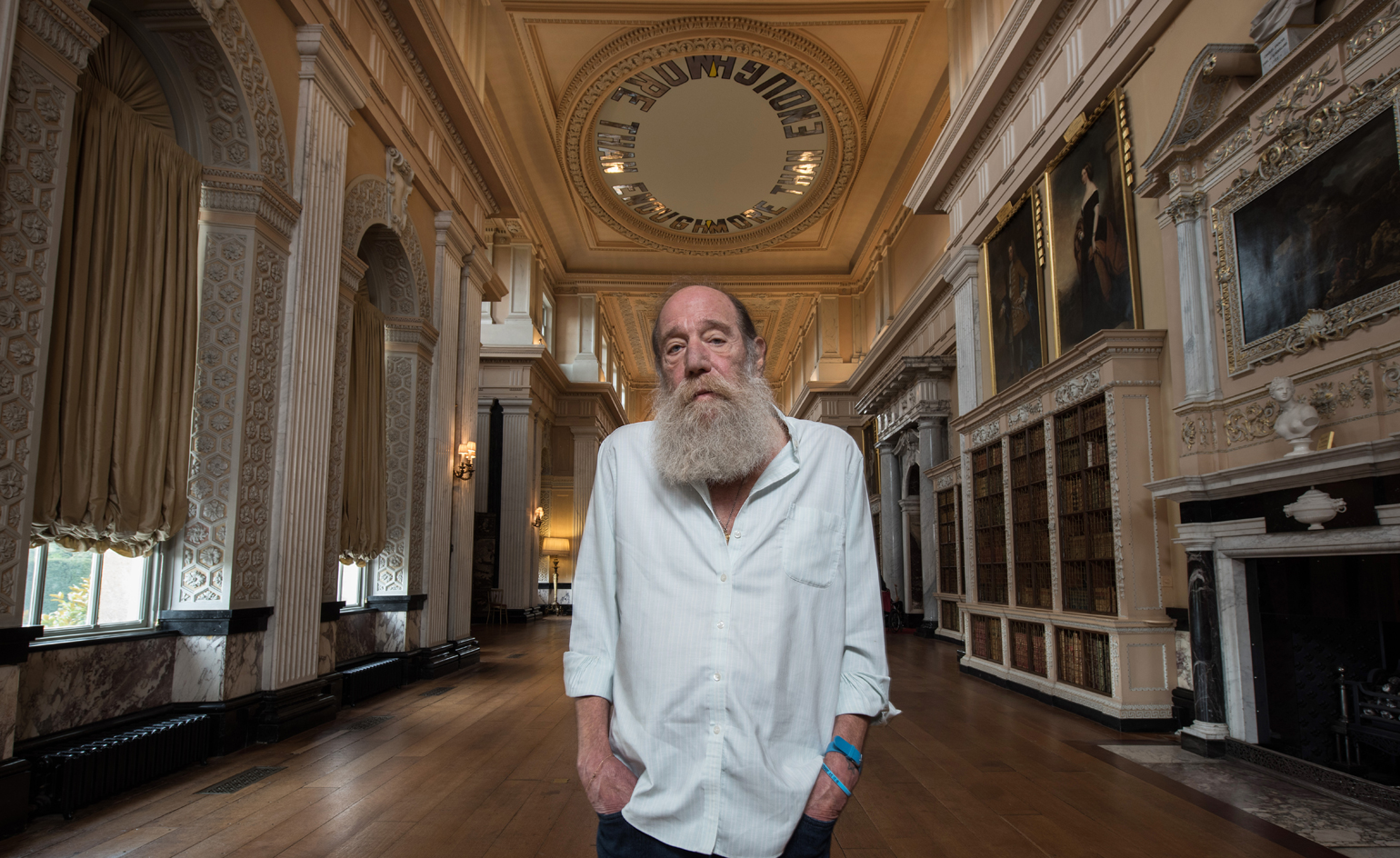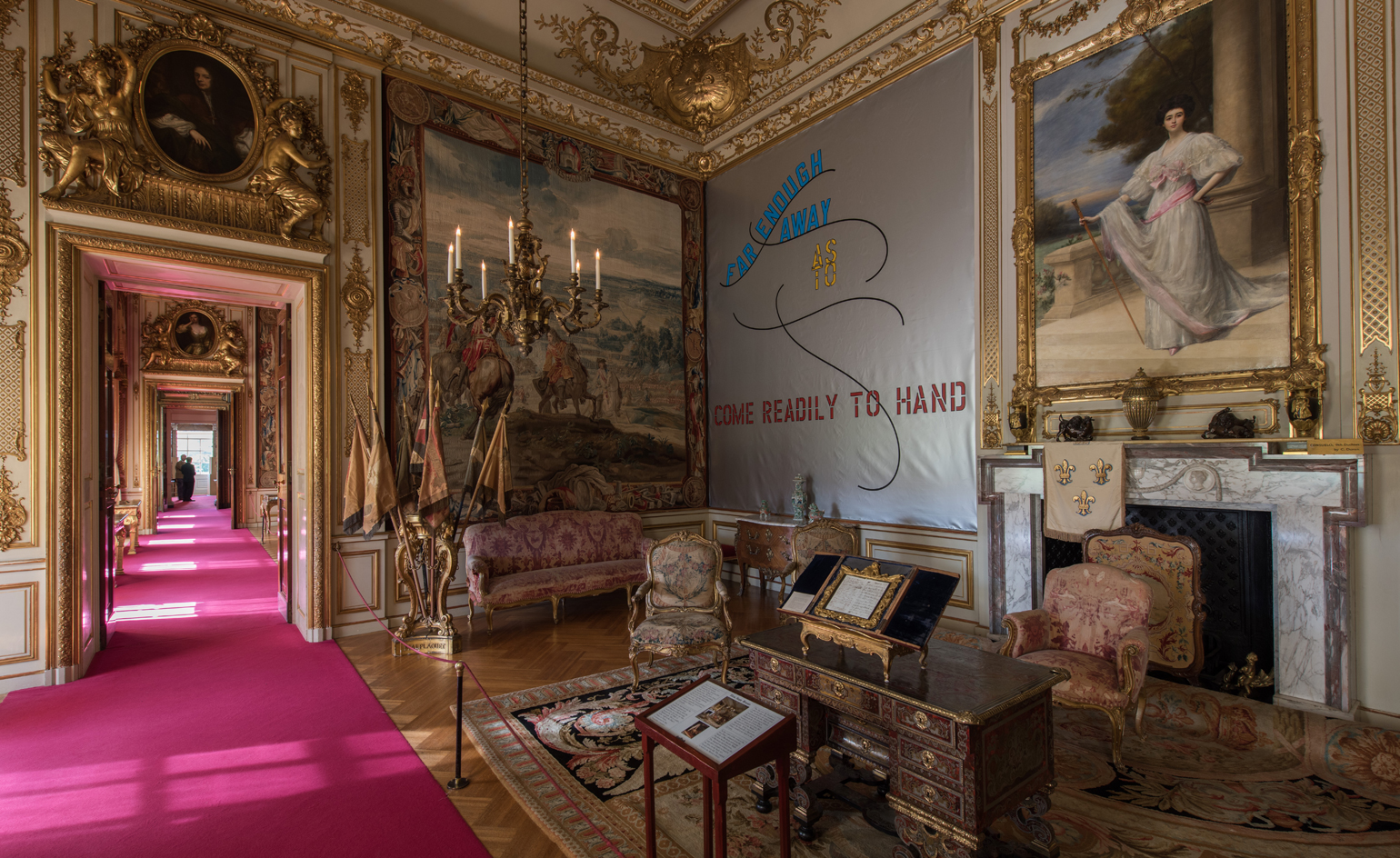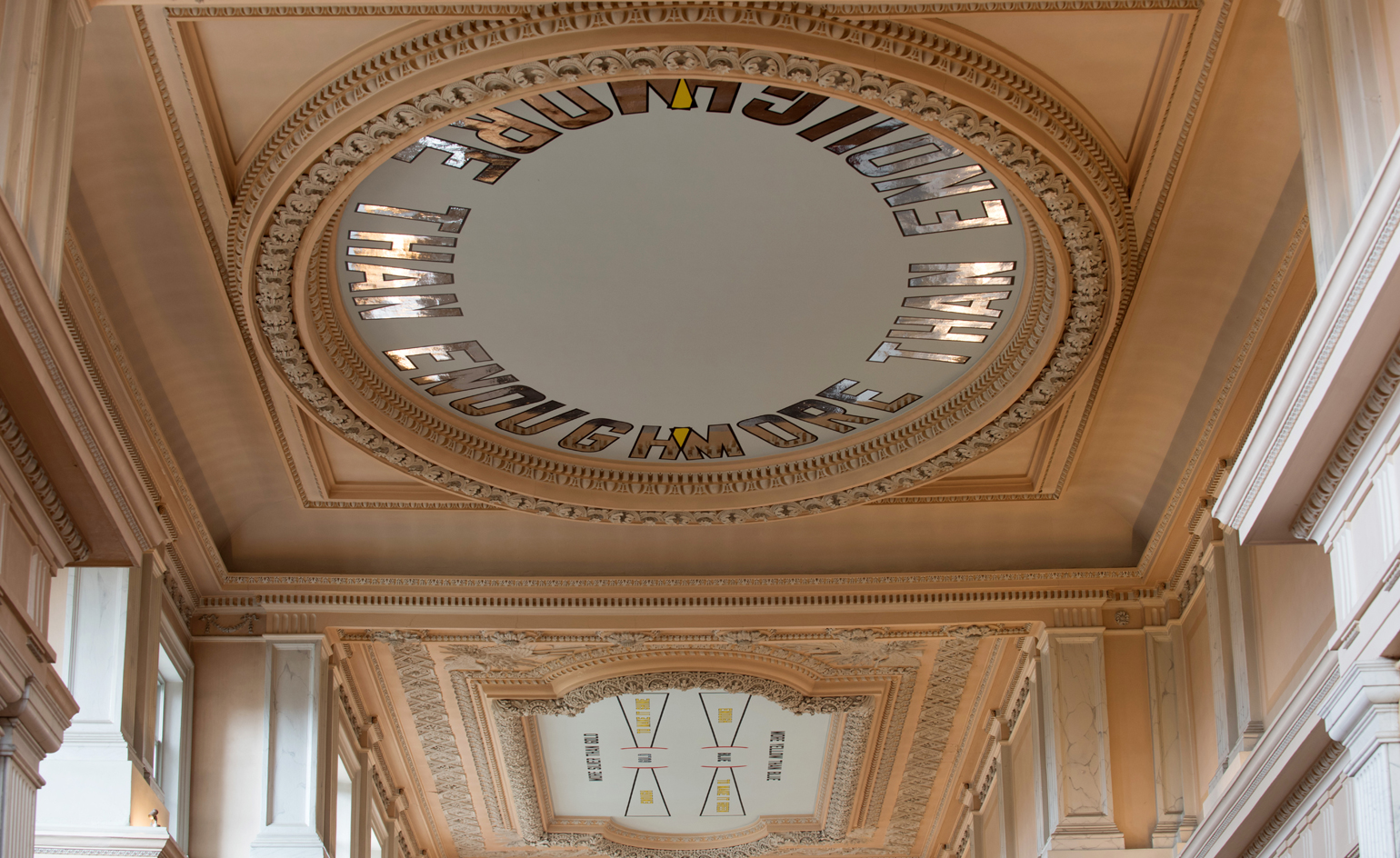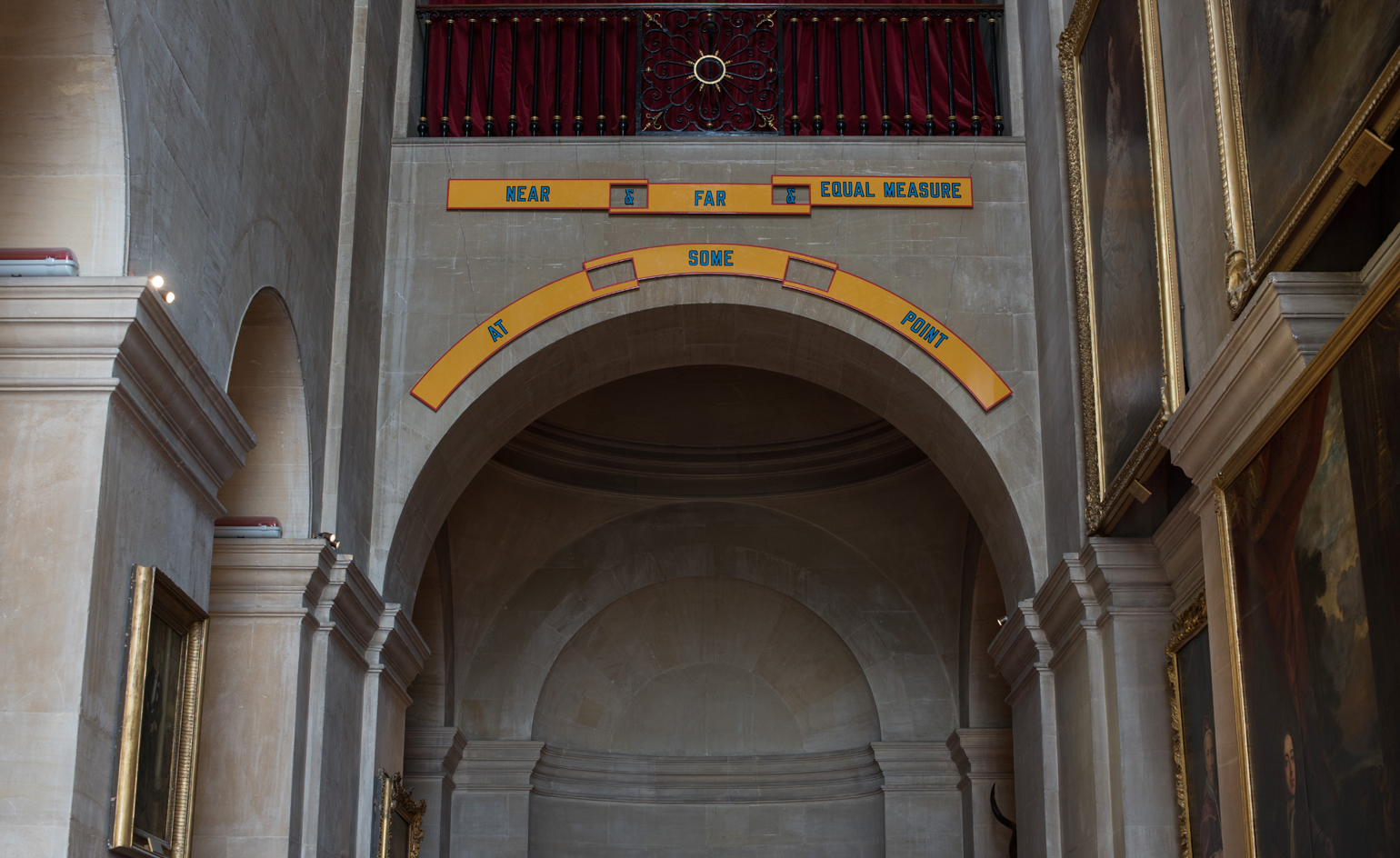Free reign conceptualism: Lawrence Weiner takes over Blenheim Palace

Stately homes tend to play it safe when commissioning contemporary art pieces. They go in for expensively finished sculptures, tapestries, glossy photographs, works that have at least a material value in common with the historic setting, works that will be easy on the eye and the imagination of the general public.
Blenheim Palace’s successful first contemporary show last year by Chinese artist-cum-dissident Ai Weiwei, which included a 17-foot glass chandelier dripping with glass crystals, is a case in point.
This year, they’ve invited no less of a giant of the contemporary art world to make big designs on their lavish 18th century Baroque ceilings – but American artist Lawrence Weiner will be less well known than Weiwei in this country, particularly among Blenheim's visiting public.
Weiner is one of the founding fathers of 1960s conceptualism, still making work that is relevant and challenging the state of the art market. Bravo to the Blenheim Art Foundation for introducing his mind-bending philosophical art, and embracing a genuine challenge on their audiences’ behalf.
The whole exhibition is word-based. The frieze of the building’s entrance is an artwork that reads, ‘WITHIN A REALM OF DISTANCE’. When you pass beyond it you are just that; as far as contemporary artists go, there can’t be many said to be further poles apart from the world of British stately grandeur than Weiner’s caps-locked, anti-establishment messages – or, as he prefers to call them, minimalist sculptures.
Weiner – who believes that 'art that imposes conditions… on the receiver for its appreciation constitutes aesthetic fascism' – accepted the Blenheim commission because 'it’s inscribed within the palace walls that whoever pops out first gets it'. In other words, because the 1st Duke of Marlborough did not believe in inheritance laws that discriminated between men and women.
There are often multiple meanings hidden in his text works here, and it’s worth spending some time over them. The most impressive piece fills the oval centre of the ceiling in the Long Library. It’s about the only space in the building’s interior that the artist could find which isn’t already decorated – ‘MORE THAN ENOUGH’, it states, in large silver and yellow letters it states.

Weiner believes that 'art that imposes conditions… on the receiver for its appreciation constitutes aesthetic fascism'.... Pictured: A Penny Here, A Penny There, 2015

... but accepted the commission because the 1st Duke of Marlborough did not believe in gender-biased inheritance laws ('it’s inscribed within the palace walls that whoever pops out first gets it', he explains). Pictured: Far Enough Away, 2015

Finding one of the only places within Blenheim Palace's walls that wasn't already decorated, Weiner has written 'MORE THAN ENOUGH' on the ceiling of the Long Library. Pictured: More than Enough, 2015

As far as contemporary artists go, there can’t be many said to be further poles apart from the world of British stately grandeur than Weiner’s caps-locked, anti-establishment messages. Pictured: Near & Far & Equal Measure at Some Point, 2015
ADDRESS
Blenheim Palace
Woodstock
Oxfordshire, OX20 1PP
Receive our daily digest of inspiration, escapism and design stories from around the world direct to your inbox.
-
 The world’s best running brands, according to Wallpaper*
The world’s best running brands, according to Wallpaper*Think you need to sacrifice style for performance? Think again. Here’s the 15 best running brands for feeling fast and looking fresh
-
 A London exhibition celebrates the next generation of Ukrainian photographers
A London exhibition celebrates the next generation of Ukrainian photographersFUTURESPECTIVE at Saatchi Gallery presents an intimate portrait of a country in the midst of conflict
-
 Nothing expands its affordable offering with a new starter smartphone, the Phone (3a) Lite
Nothing expands its affordable offering with a new starter smartphone, the Phone (3a) LitePacking all the familiar Nothing tech tropes into a low-cost, high-powered device, the Nothing Phone (3a) Lite should open up the brand to even more customers